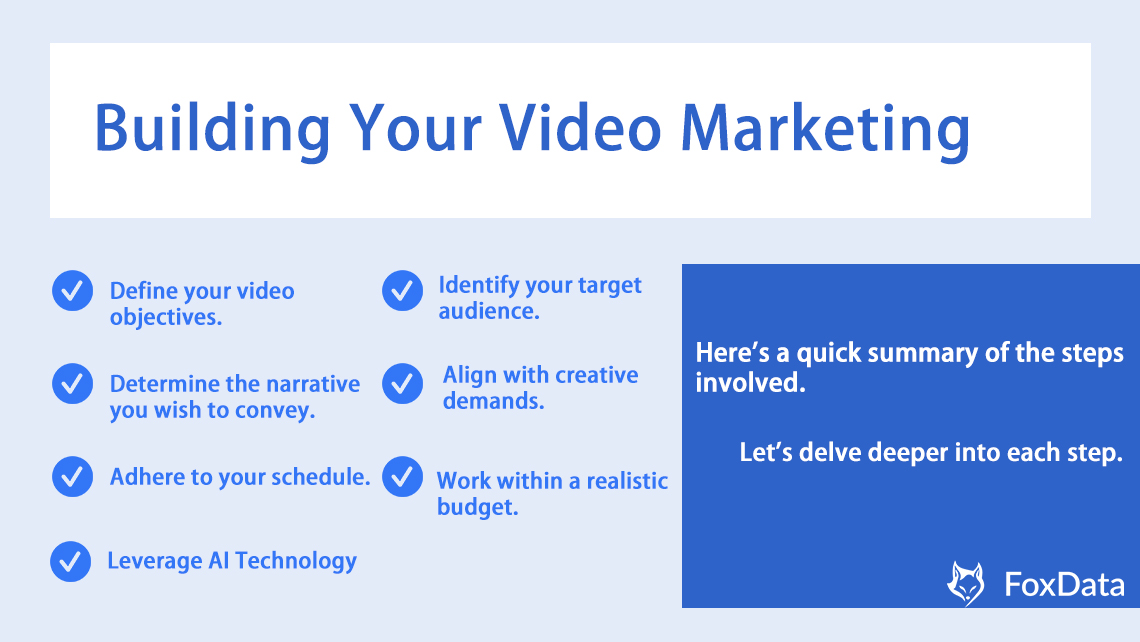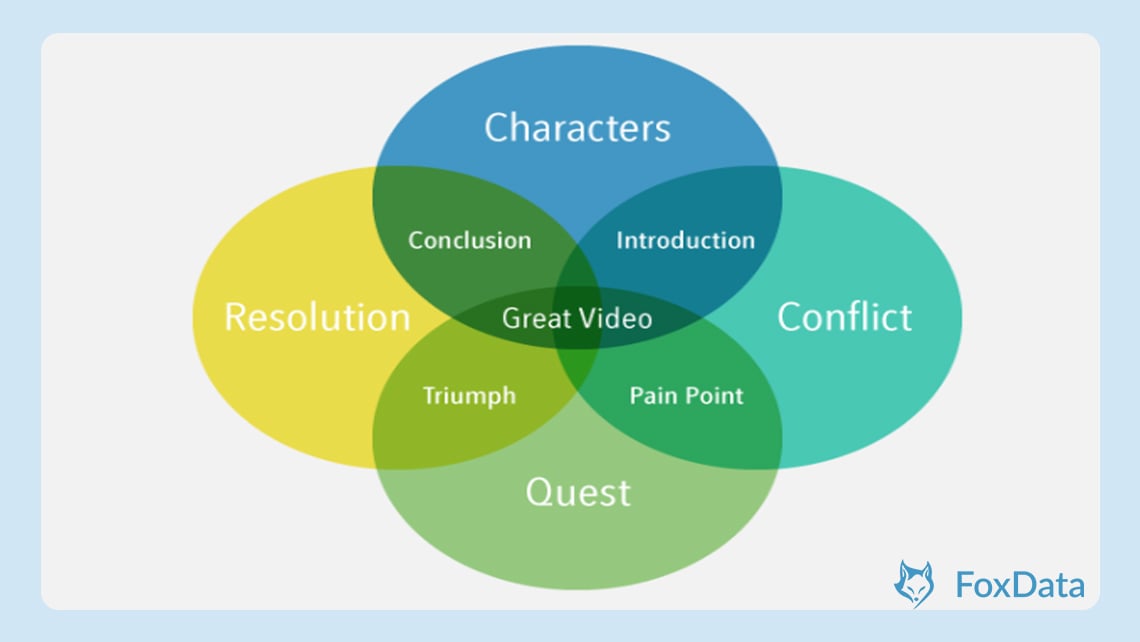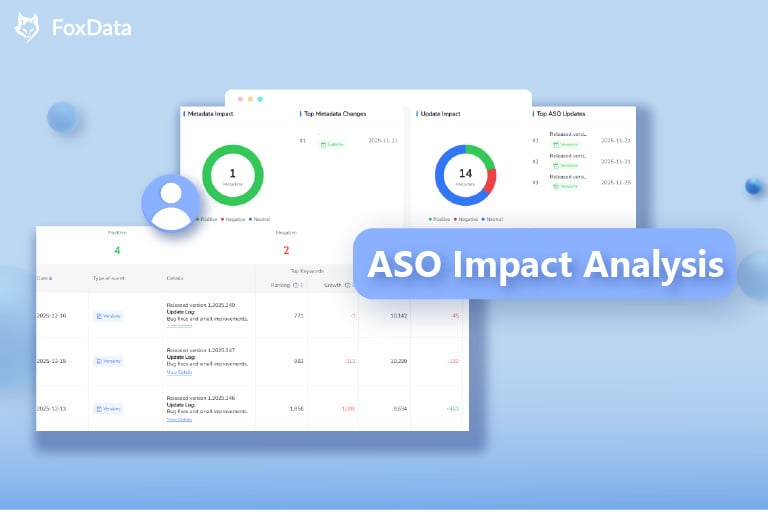How to Do Video Marketing Successfully in 2024?

Welcome to the essential realm of video marketing. Your visit here confirms your awareness that the modern consumer's appetite has evolved beyond the limitations of text and still imagery. In an era where livestreaming, interactive 360-degree videos, augmented reality, and an array of AI tools introduced in 2023 have captured the audience's imagination, traditional content no longer suffices. Reflecting this shift, the digital video marketing industry in the United States has swelled to a staggering $135 billion, underscoring the widespread embrace of video content by brands across the board.
This surge in video marketing means that regular production and release of branded video content have become benchmarks for staying relevant. Whether you're taking your first steps or are already versed in the field, the initial phase of video marketing can be daunting. That's where we come in!
I'm Helen, a video ad marketing specialist at Foxdata. As a specialized video advertising team, we have worked with the social media placement team to bring our client, an education course supplier, to over 50,000 landing page clicks in two weeks.

Our case study delves into how we help education course supplier make smart use of Facebook by running paid ads with the brand videos. This strategy helps them tell their brand's story, gets their name out there across various countries.
👉 Related blog: How Education Course Supplier Achieved Over 50,000 Landing Page Clicks in Two Weeks?
👏If you are planning video marketing and want to find the team to help you run the incorporation of video advertising into your digital marketing strategy, click here to contact us.
Next, I'm going to go through this guide to help you understand the details of a successful video marketing strategy. Start browsing below to learn everything you need!
How Do I Create a Video Marketing Strategy?
Video marketing tactics have been around for some time. In the same vein as you wouldn't produce a TV ad and purchase Super Bowl airtime without due diligence and planning, creating a digital marketing video calls for a similar approach. A well-crafted video marketing strategy is your compass—it dictates your budget, deadlines, production methods, performance indicators, and more. Therefore, it's essential to have your strategy documented and finalized before embarking on video production.

Defining Your Video Objectives
The initial step is to clarify the aims of your video. You should ideally have content for every phase of the marketing funnel. Begin by deciding which funnel stage is the most critical to address:- Awareness Stage: The viewer acknowledges a problem. Videos here should draw in new viewers and introduce them to your brand.
- Consideration Stage: The viewer is exploring solutions. This content should provide information, recommendations, and comparisons.
- Decision Stage: The viewer is close to making a choice. Use customer testimonials to show why your offering is superior.
Depending on your goals—whether to attract new customers, engage current ones, or support post-purchase satisfaction—you'll craft your video content accordingly.
Identifying Your Target Audience
Knowing the funnel stage informs who you're targeting. Crafting a buyer's persona, if not already in place, is vital for this step. Your video should be tailored to:
- The intended user of your product (buyer's persona).
- The video's role in the marketing funnel.
- The platforms where your audience is most active.
Answering these questions ensures you not only pinpoint your audience but also how to reach them effectively.
Determining Your Story's Narrative
The storytelling aspect is both exciting and challenging. Your story should include:
- A protagonist with a goal, mirroring your target demographic.
- A conflict, representing the customer's issue.
- A quest, introducing your product or service.
- A resolution, showcasing how you solve the problem.
Your narrative should resonate with your brand's mission and evoke the desired emotions from your audience, influencing every aspect of your video, from script to set design.
"In content creation, we emphasized brand storytelling. To capture the attention of the fast-paced Facebook user base, we produced a series of dynamic and emotionally charged video content. "
-Video Ads Team at FoxData

Aligning with Creative Demands
While you're weaving your video's narrative, be cognizant of the stakeholders involved in the approval process—managers, company founders, marketing teams, and so on. Their feedback is crucial and can significantly alter the direction of your video. Adjustments in script, messaging, and objectives can disrupt the production flow, which is why these are common hurdles. "We also implemented a dynamic feedback loop, collecting user feedback through social media interactions such as comments, likes, and shares. "
-Video Ads Team at FoxData
Adhering to Your Schedule
In the realm of video production, timelines are your lifeline. From the initial concept to the final distribution, it's imperative to have a structured schedule. In fact, multiple timelines are recommended: one overarching timeline for the entire project, and separate ones for production, post-production, and distribution. These timelines act as checkpoints, providing clarity on progress and remaining tasks.
It's essential that each department—marketing, production, social media—operates with its own timeline, ensuring a cohesive workflow. Transparency is key; keep all team members abreast of any changes or milestones reached.
 Explore 2026 Mobile Game Marketing Strategies
Explore 2026 Mobile Game Marketing Strategies
Join industry experts on December 17, 2025 for a live online panel via Zoom to uncover mobile game marketing trends, creative strategies and growth insights.
Register Now
Working Within a Realistic Budget
Budgeting is a cornerstone of your strategy. Plan for in-house production versus outsourcing, and be aware of potential splurges and savings. Researching and comparing costs for different services and production methods is also crucial.

Join industry experts on December 17, 2025 for a live online panel via Zoom to uncover mobile game marketing trends, creative strategies and growth insights.
Leveraging AI Technology
AI tools can amplify your video marketing strategy's effectiveness and efficiency. Utilizing machine learning for video content analysis can yield insights into audience preferences, enabling targeted content creation. AI can also streamline video production and facilitate A/B testing and performance metrics analysis.However, it's important to remember that the human element is irreplaceable in storytelling and emotional connection. While AI provides data-driven support, the creativity and originality that come from human input are what make content truly resonate with viewers.
If you are interested in the creativity and originality that come from human input and to bring your product over 50,000 landing page clicks in two weeks, why not contact us to request a demo. We will surprise you!






